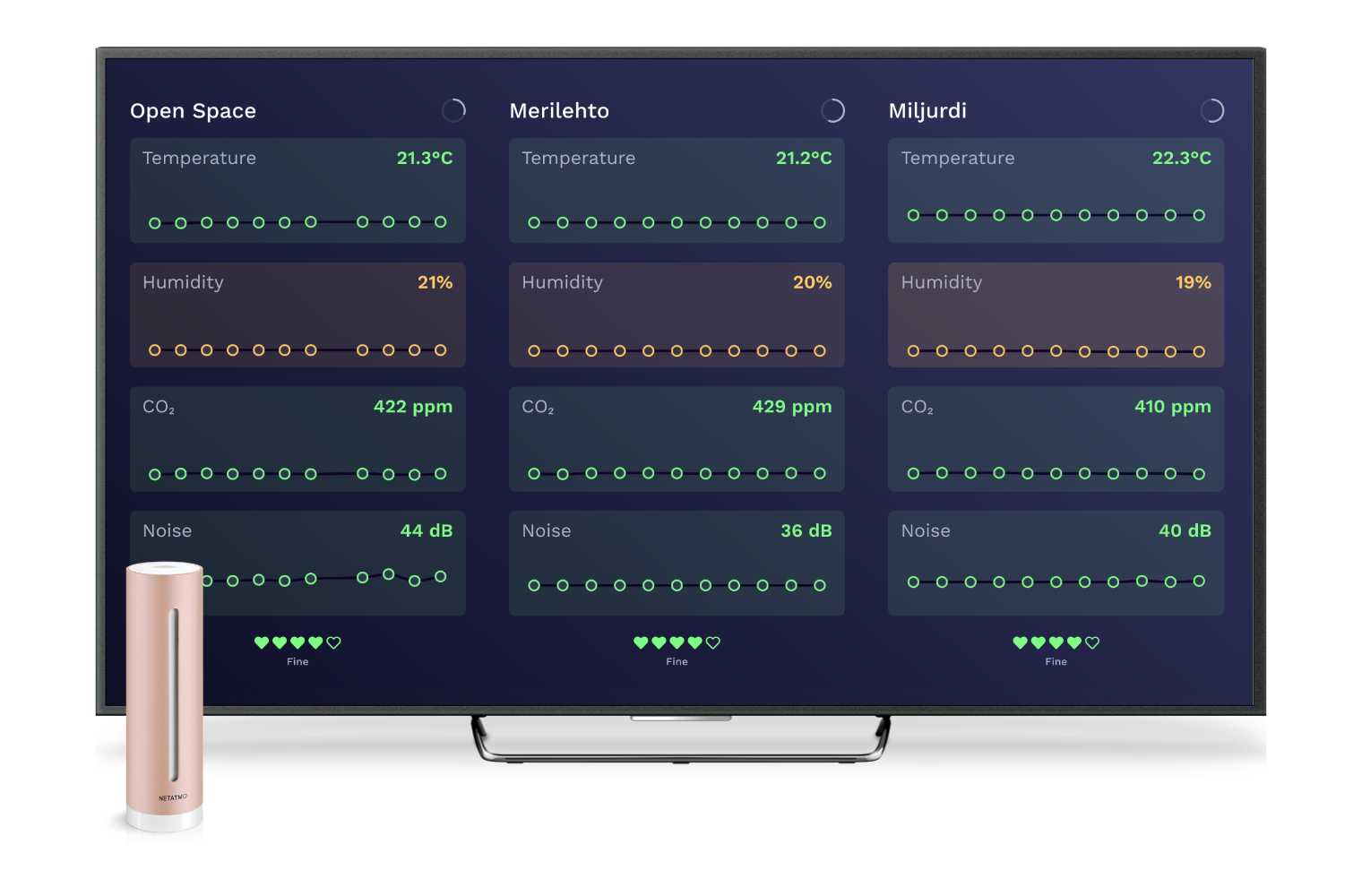
There’s been some interesting research into the effects of increased levels of CO₂ on human cognition. Namely that elevated levels of carbon dioxide essentially make us dumber. Studies have found that concentrations above 1000ppm can have a significant negative impact.
What’s more, CO₂ tends to build up in conference rooms as a meeting goes on, meaning CO₂ levels will be at their highest near the end of the meeting when decisions are often being made. Poor air quality might actually be making us do stupid things (archive).
To combat this at work, we’ve installed air quality sensors in the meeting rooms at our office. These are relatively affordable, off-the-shelf Netatmo air quality monitors. They monitor temperature, humidity, CO₂, and noise levels.
The Netatmo devices aren’t really meant for an office environment but luckily Netatmo has a decent API available so we’ve been able to build our own custom dashboard that lets everyone see what the state of the air quality is. We also installed a dedicated air quality dashboard in the office lobby to make it easy to check up on the current situation.
Technical stuff
The dashboard is a React app with a few serverless functions to proxy data requests to the Netatmo API. It can’t connect directly to the API from the browser as the Netatmo API requires authentication and we don’t want to force everyone (and the unattended dashboard TV) to have to log in with Netatmo credentials.
Currently the source for the dashboard isn’t open source, but this is something we might consider in the future.
The effects
While it’s hard get numbers on whether better decisions are being made in meetings, having the dashboard has definitely made everyone at Kisko more aware of the air quality. It’s a lot more common for meetings to have small breaks or at least have someone open a window when elevated CO₂ levels are noticed. The dashboard is also a good conversation starter with clients and other visitors to the office.
Future improvements
An automated notification in our team chat would make it a lot easier to notice when the air quality deteriorates in a conference room, especially as the individual meeting rooms don’t have air quality displays.
We’ve also considered getting some sort of notification light, perhaps Lifx or Philips Hue, to act as a visual indicator in the meeting rooms when the air quality goes south.